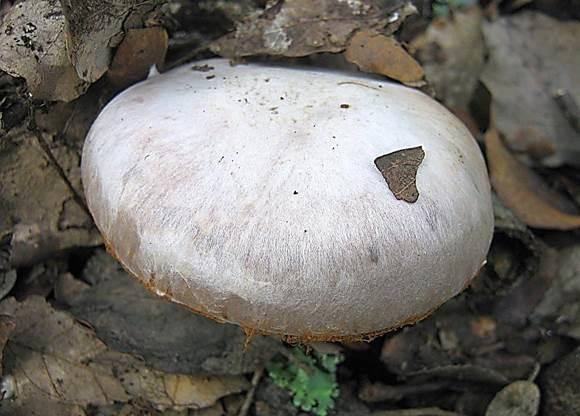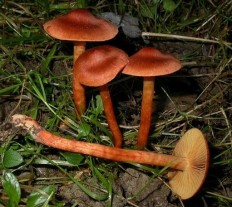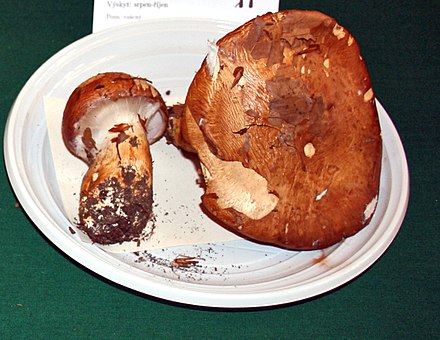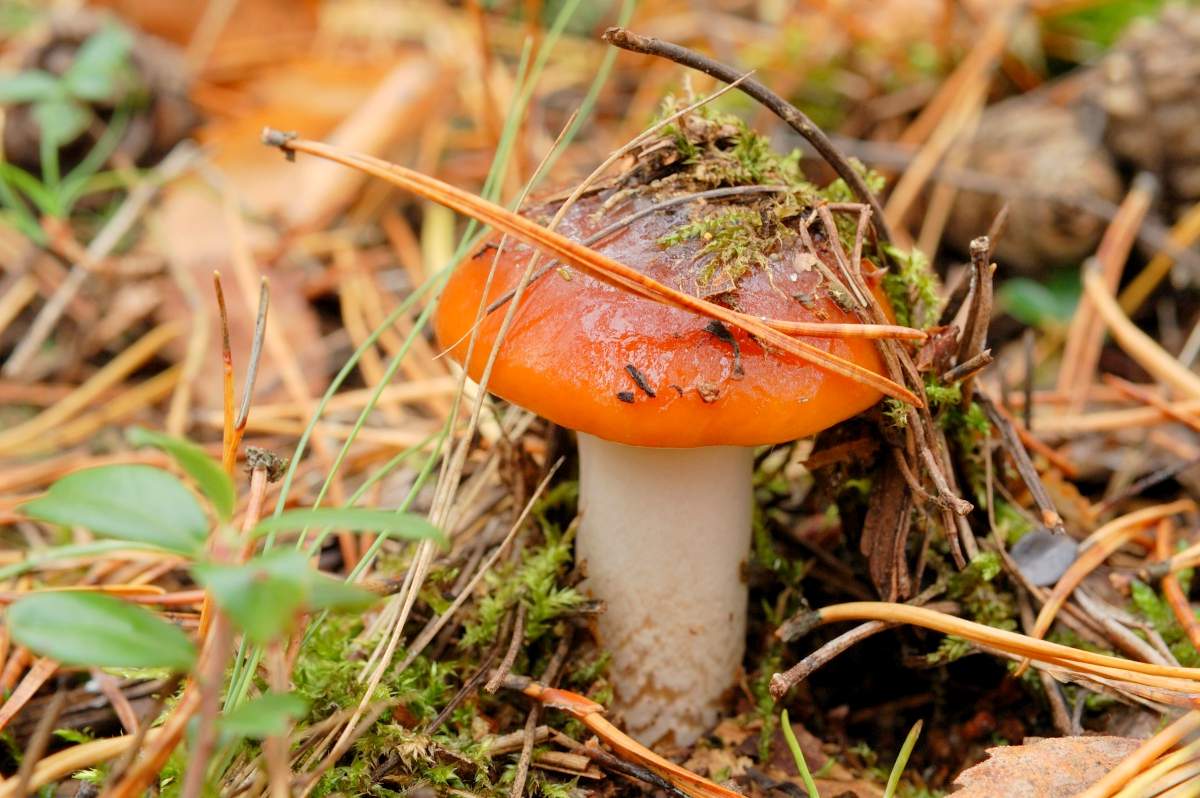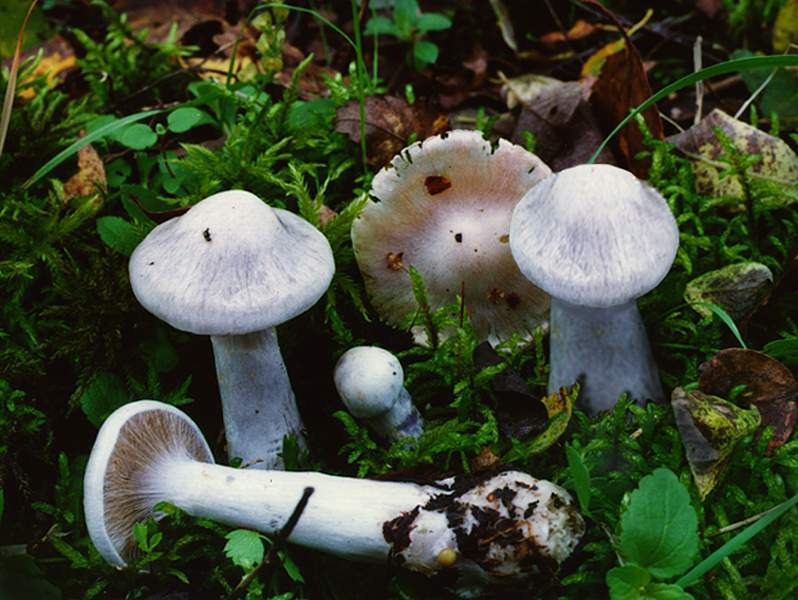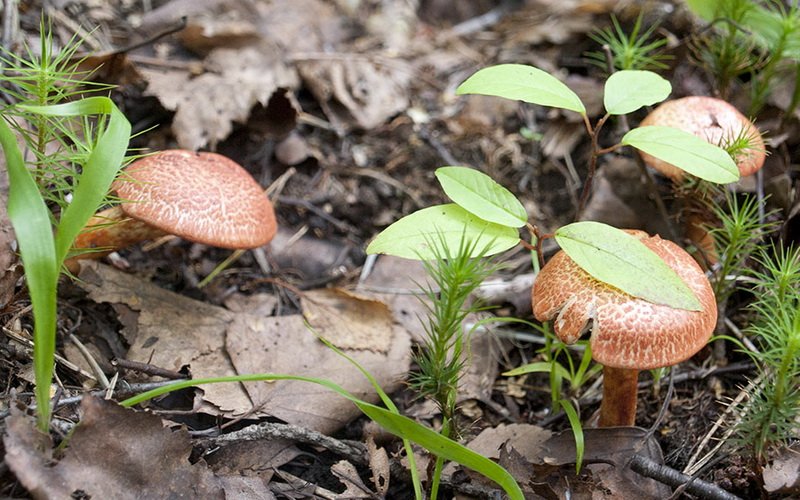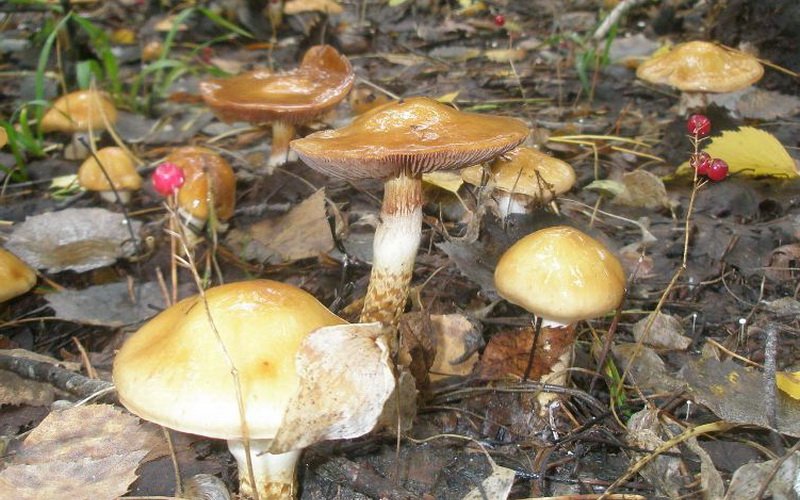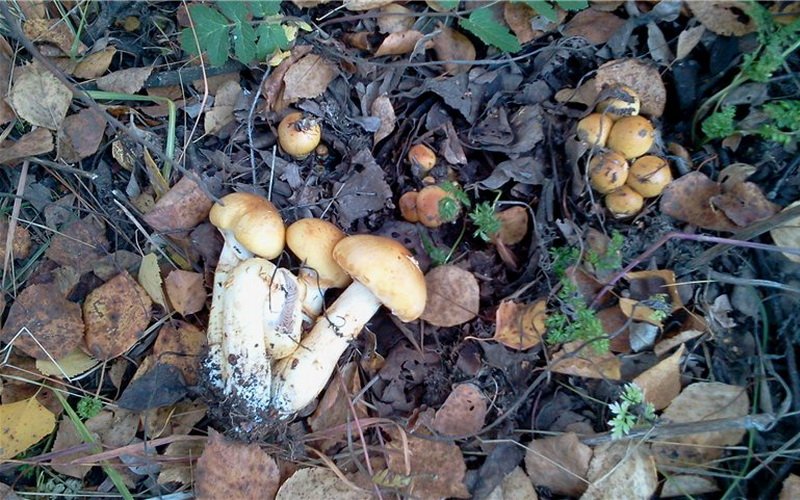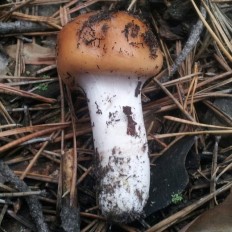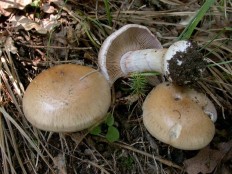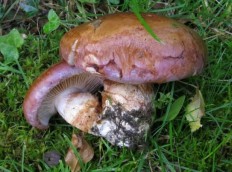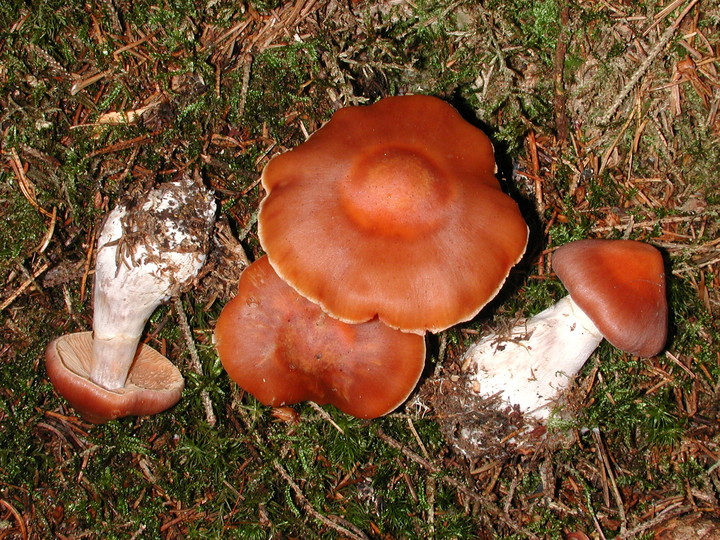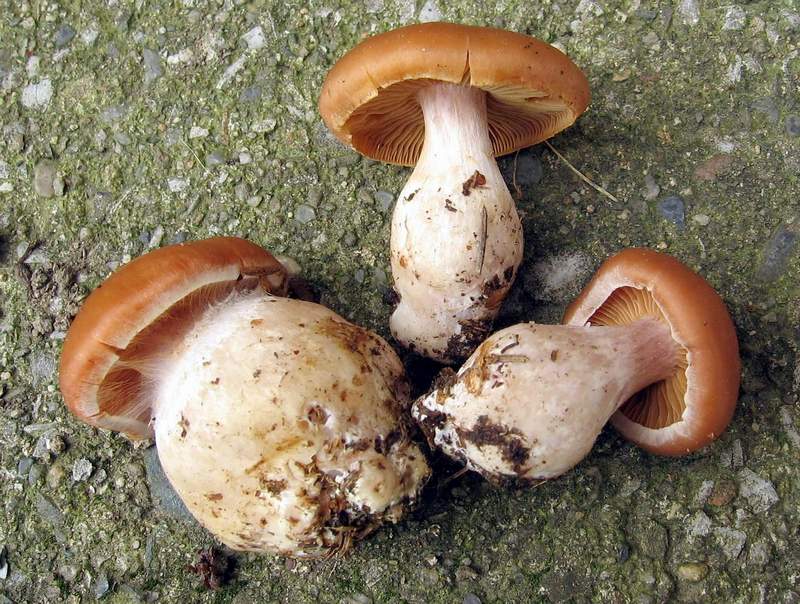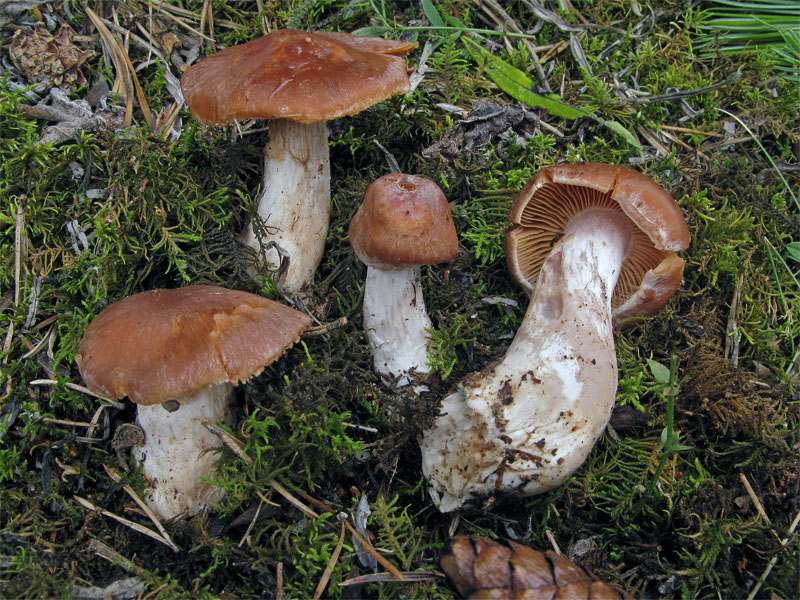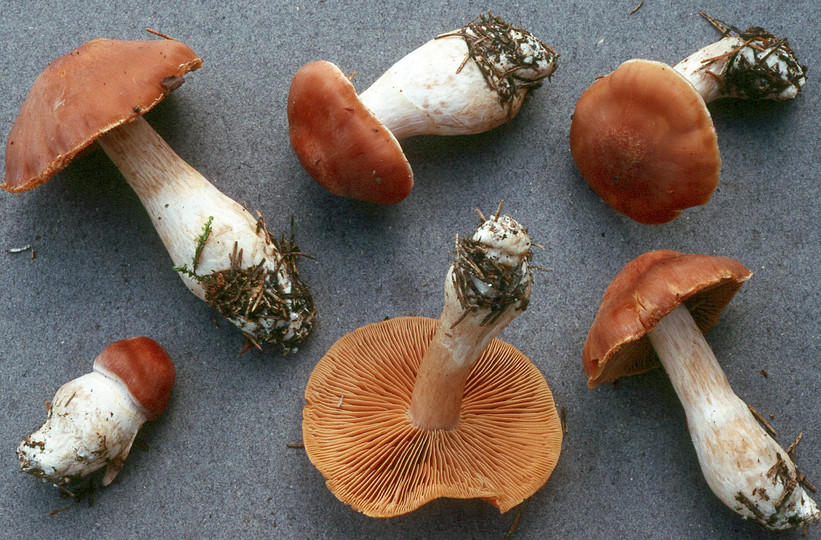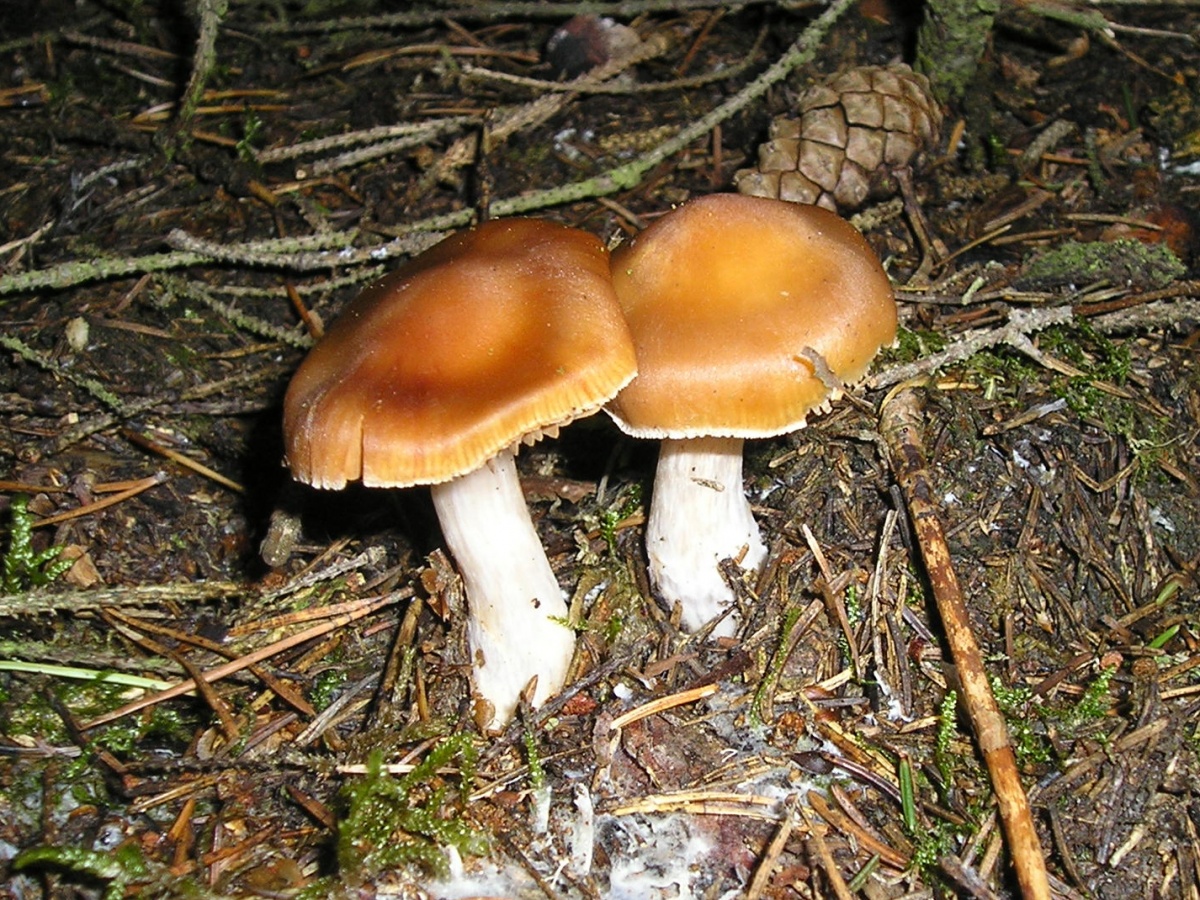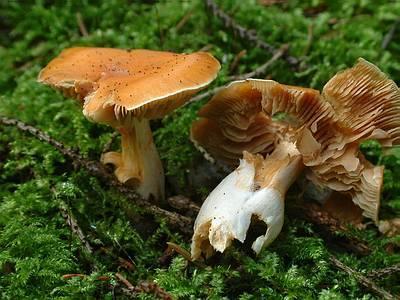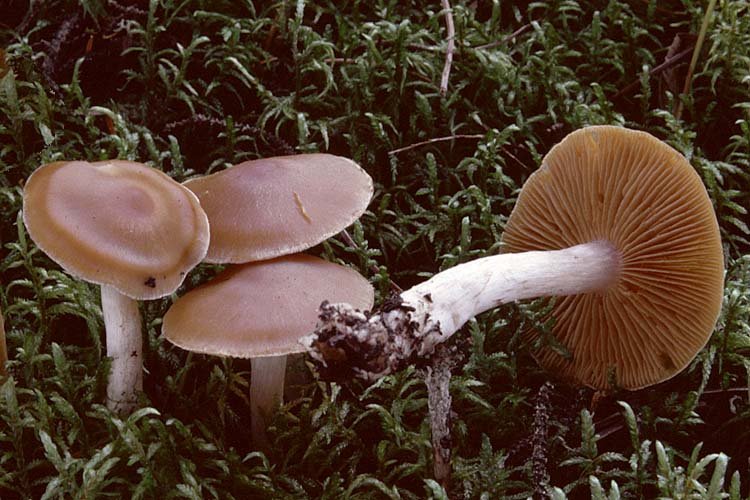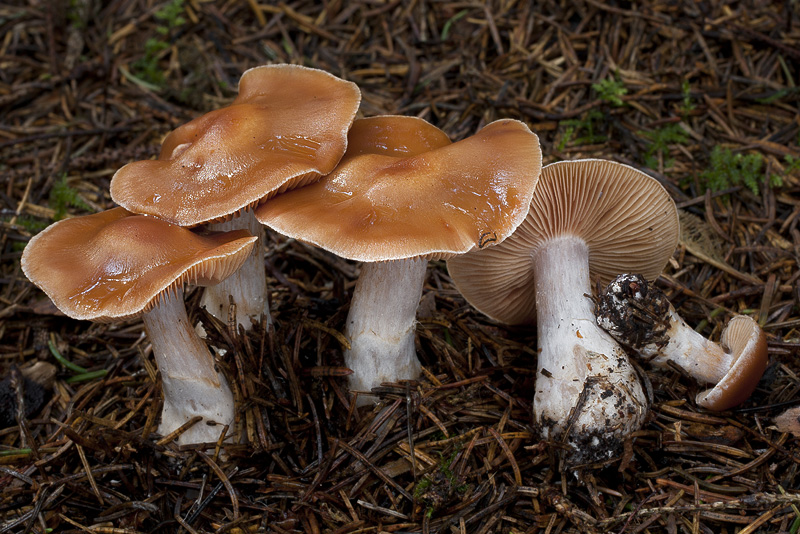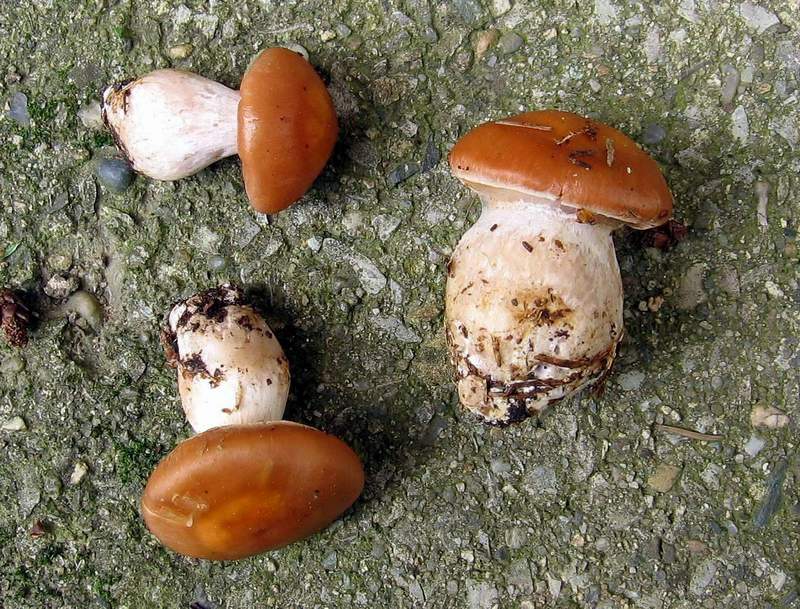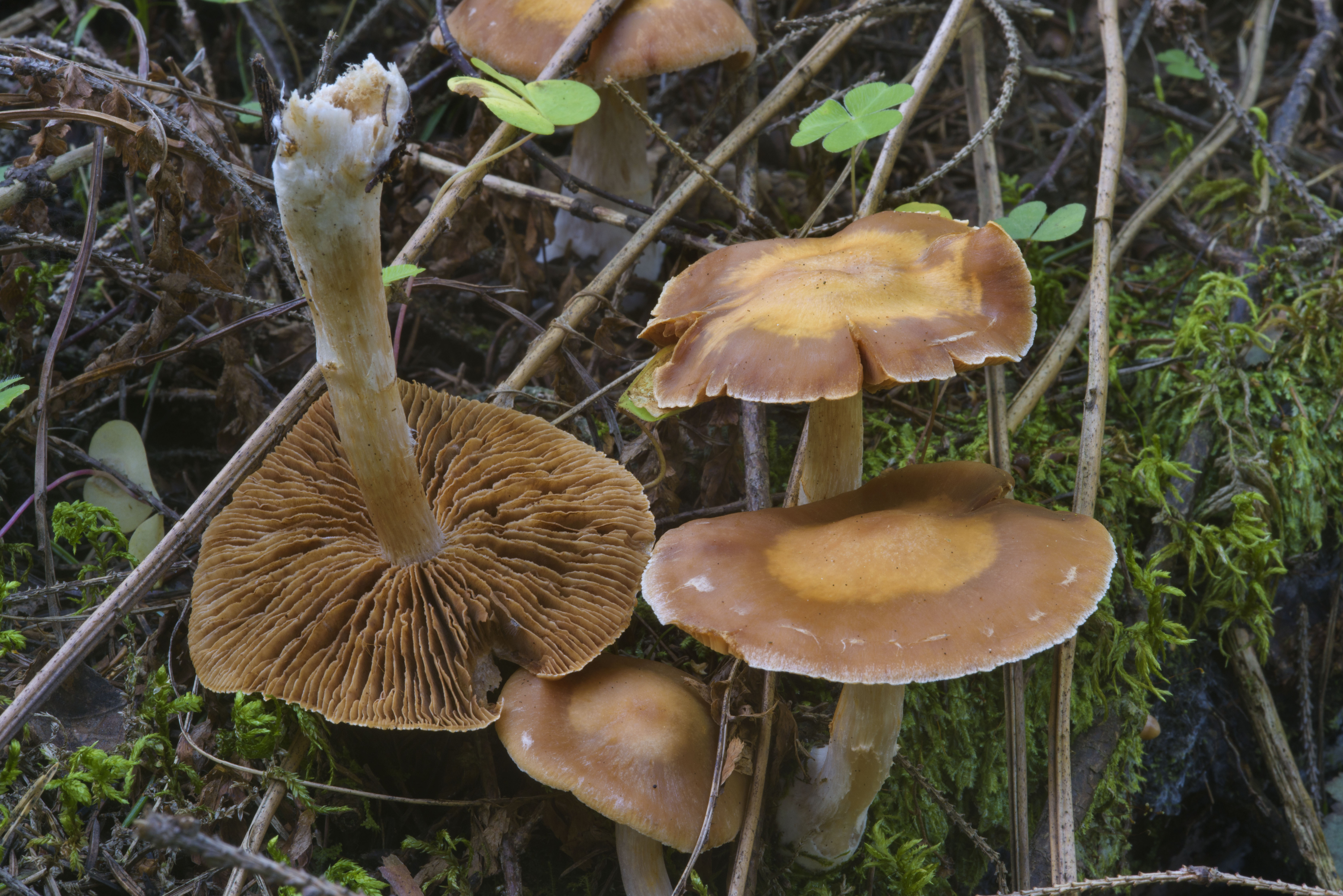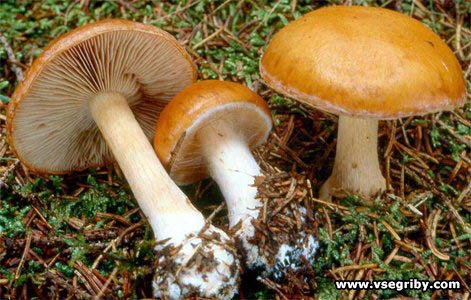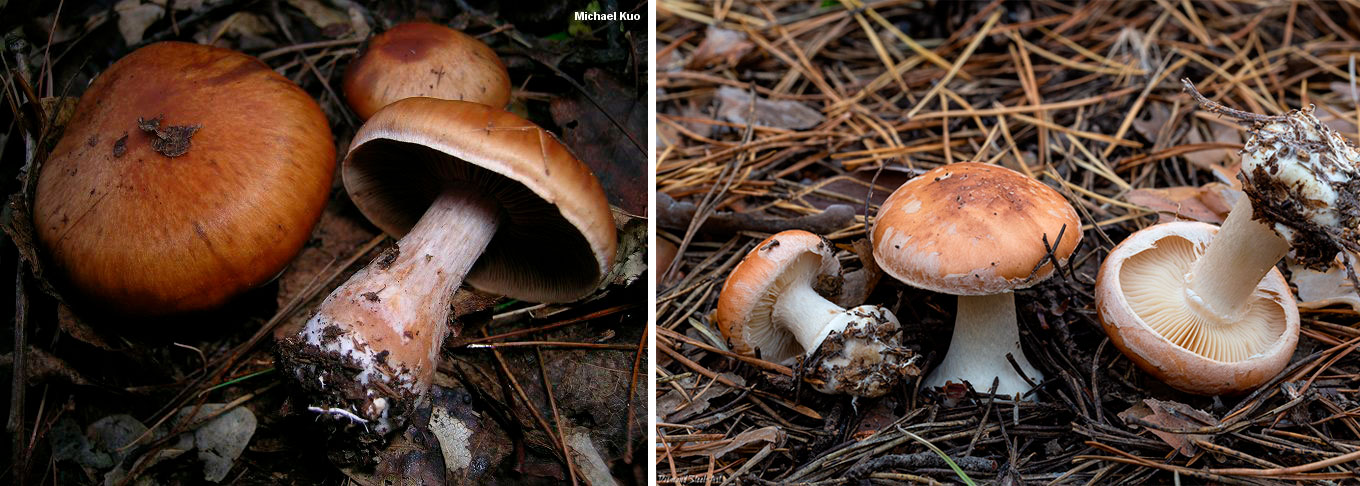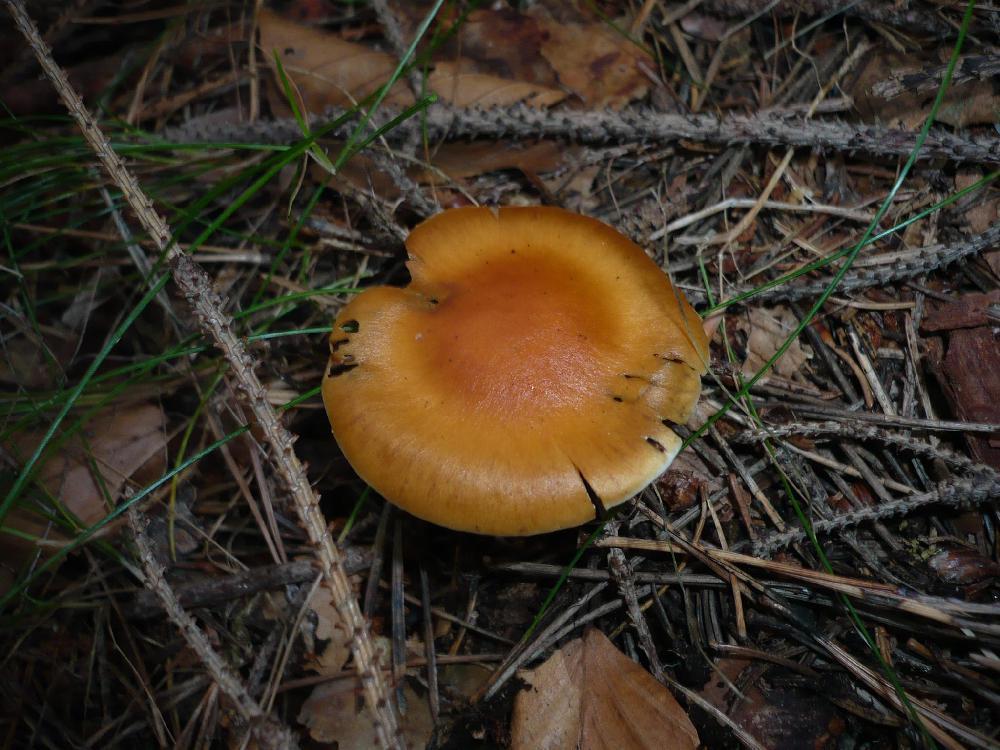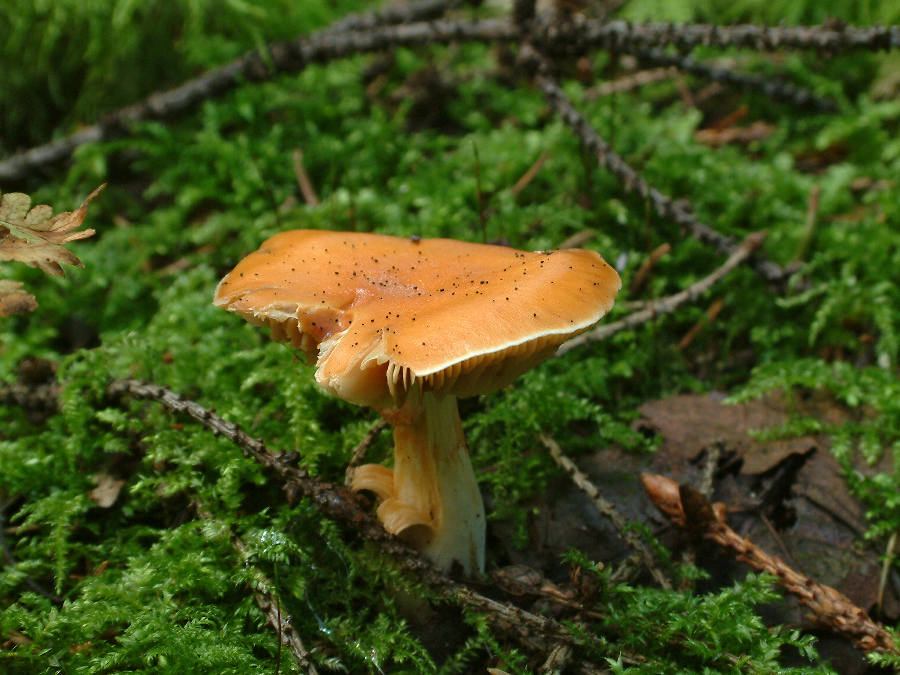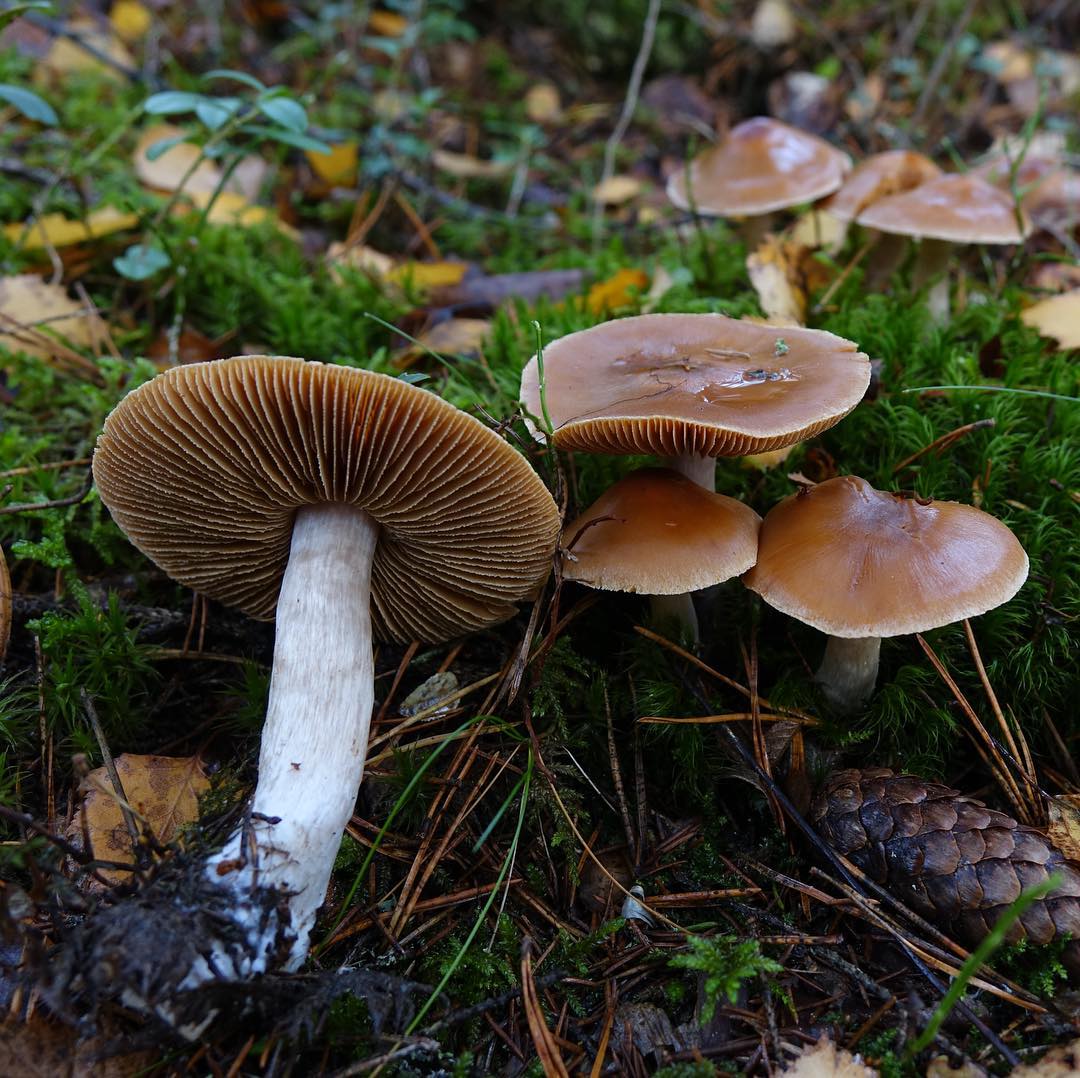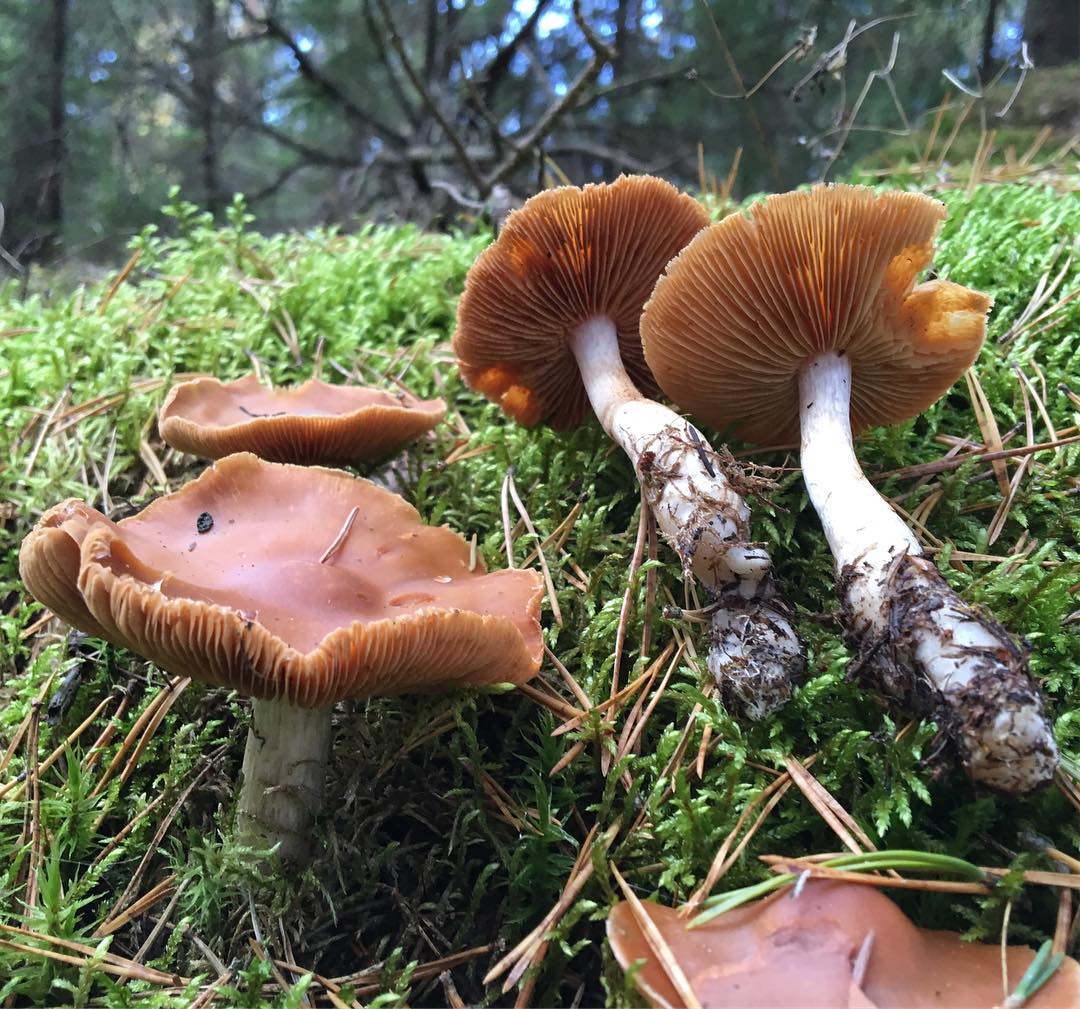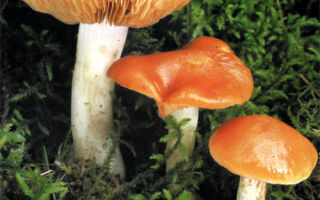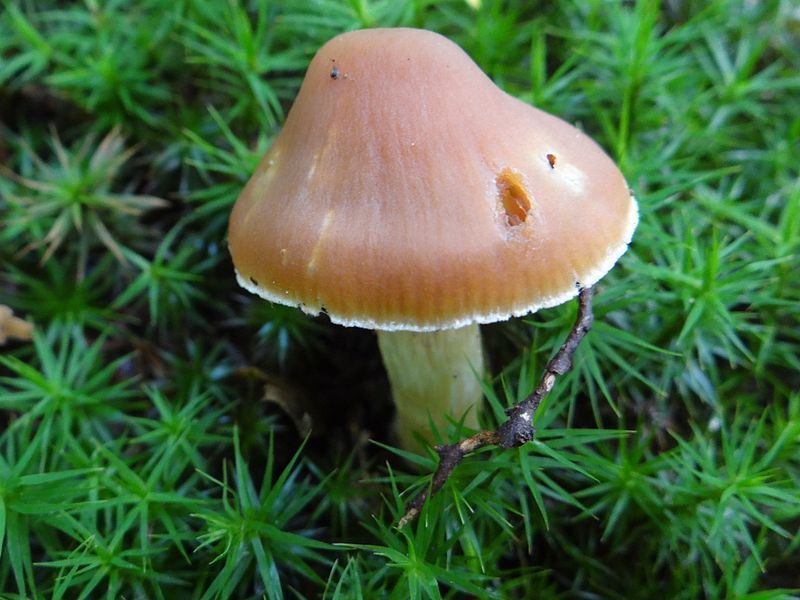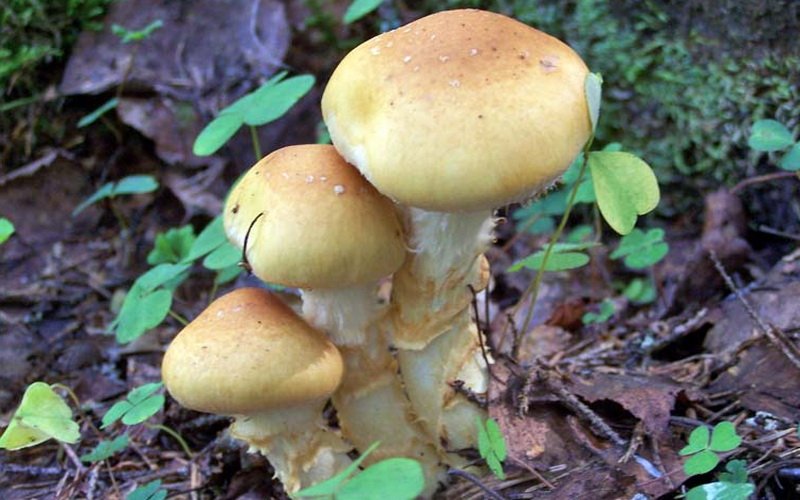Description of the cobweb apricot yellow.
Cobweb apricot yellow is a cap-toothed fungus. At a young age, the shape of the cap is convex, later it opens up, becoming flat, in the center a tubercle may or may not be preserved. Its diameter is 3-8 centimeters. The hat readily absorbs moisture, that is, it is hygrophilous. The surface of the cap shines a little, becomes sticky after rain. The color of the cap is reddish-brown or yellowish-brown, and when it dries up, it becomes ocher-yellow.

The flesh of the spider web is apricot yellow white. It has a faint sparse odor. On contact with guaiacol, the pulp turns green, and on contact with phenol, its color turns bright brown.
It is a lamellar mushroom. The plates grow with a tooth to the leg. They are located often. In young fruit bodies, the plates are yellowish-buffy or brownish-buffy in color, and when the spores ripen, their color becomes rusty-brown. Rusty brown spore powder. Spores are elliptical in shape, have an uneven warty surface.

The leg is cylindrical or widened at the bottom. Its length is 6-13 centimeters, and the girth does not exceed 1.5 centimeters. The surface of the leg is silky fibrous, white. On the leg there is an inconspicuous white belt of the cortina.
Distribution of apricot-yellow cobwebs.
This mushroom is widespread in Eurasia and North America. Apricot-yellow ryadovki settle in conifers, giving preference mainly to spruce forests. This type of rowing bears fruit from late summer to early autumn.

Evaluation of the edibility of the apricot yellow spiderweb.
It is a fleshy edible mushroom
However, these rows should be collected with caution, since there are inedible relatives

Related species.
The peacock webcap is a poisonous relative of the apricot yellow webcap. At a young age, the shape of its cap is spherical, over time it becomes flat. The surface of the cap is scaly, the edges are ragged. The color of the plates is brick, through them whitish flesh is visible. The leg is very strong, thick, short, also with scales. The pulp is slightly fibrous, without a pronounced smell and taste.

Peacock cobwebs grow in many European countries, they are also found in our country - from its European part to Siberia. These mushrooms prefer mountainous areas. Their favorite trees are beeches. They bear fruit from August to October.
Slime cobweb is a conditionally edible relative of the apricot yellow cobweb. His cap is rather large, bell-shaped at a young age, and later becomes flatter. In the center it is dense, and thin to the edges. The color of the cap is brown, yellowish or brown. There is so much mucus on the cap that it can hang around the edges. The leg is fusiform, white with a bluish tinge. It also has a lot of mucus on it. Several rings of the canvas may remain on the leg. The pulp is odorless and tasteless, white or creamy.

This species is distributed throughout Eurasia and is found in North America. It grows in conifers, especially in pine forests, but also found in mixed forests.
Silver webcap: photo and description
| Name: | Silver webcap |
| Latin name: | Cortinarius argentatus |
| Type of: | Inedible |
| Synonyms: | Cortinarius subargentatus. |
| Systematics: |
|
The silver webcap is a representative of the genus and family of the same name, represented by many varieties. The Latin name is Cortinarius argentatus.
Description of the silver webcap
The silvery webcap is distinguished by its silvery flesh. On the bottom of it are purple plates. As they grow, they change color to brown or ocher, with a rusty tinge.
Description of the hat
Young specimens have a convex cap, which eventually becomes flat and reaches 6-7 cm in diameter. On the top of it, you can see folds, bumps and wrinkles.
The surface is soft and silky to the touch, lilac color
With age, the cap gradually fades, and its color becomes almost white.
Leg description
The leg is widened at the base and narrowed at the top. Its color is usually gray or brown, with a pronounced purple tint.
The leg reaches up to 8-10 cm in height, there are no rings on it
Where and how it grows
The fungus is common in coniferous and deciduous forests. The period of active fruiting begins in August and lasts until September, some specimens can be found even in October. The variety bears fruit stably every year.
You can learn more about the features of the cobwebs in the video:
Doubles and their differences
The mushroom is similar to many species, but its main counterpart is the goat's webcap (smelly, goat), which can be distinguished by its purple tint.
The surface has a violet-gray color and a thin flesh with an unpleasant aroma. The leg is covered with the remains of a bedspread with red stripes and spots. Fruiting time lasts from July to the end of October. The species grows in pine forests, prefers mossy areas.
Conclusion
Silver webcap is an inedible mushroom with a convex cap and a leg extended at the base. Grows in coniferous and deciduous forests from August to September. The main false double is a poisonous goat webcap with a purple tint.

